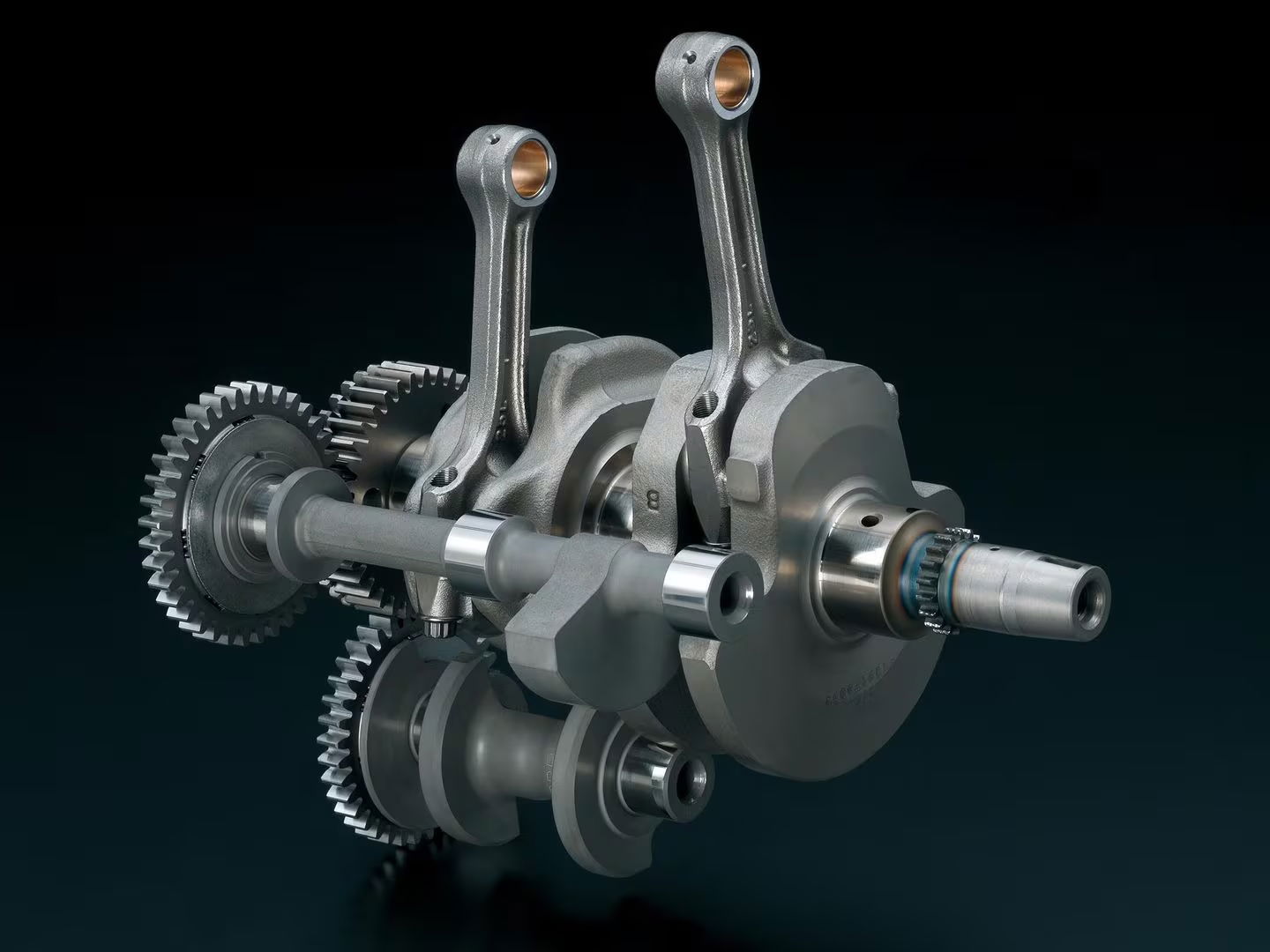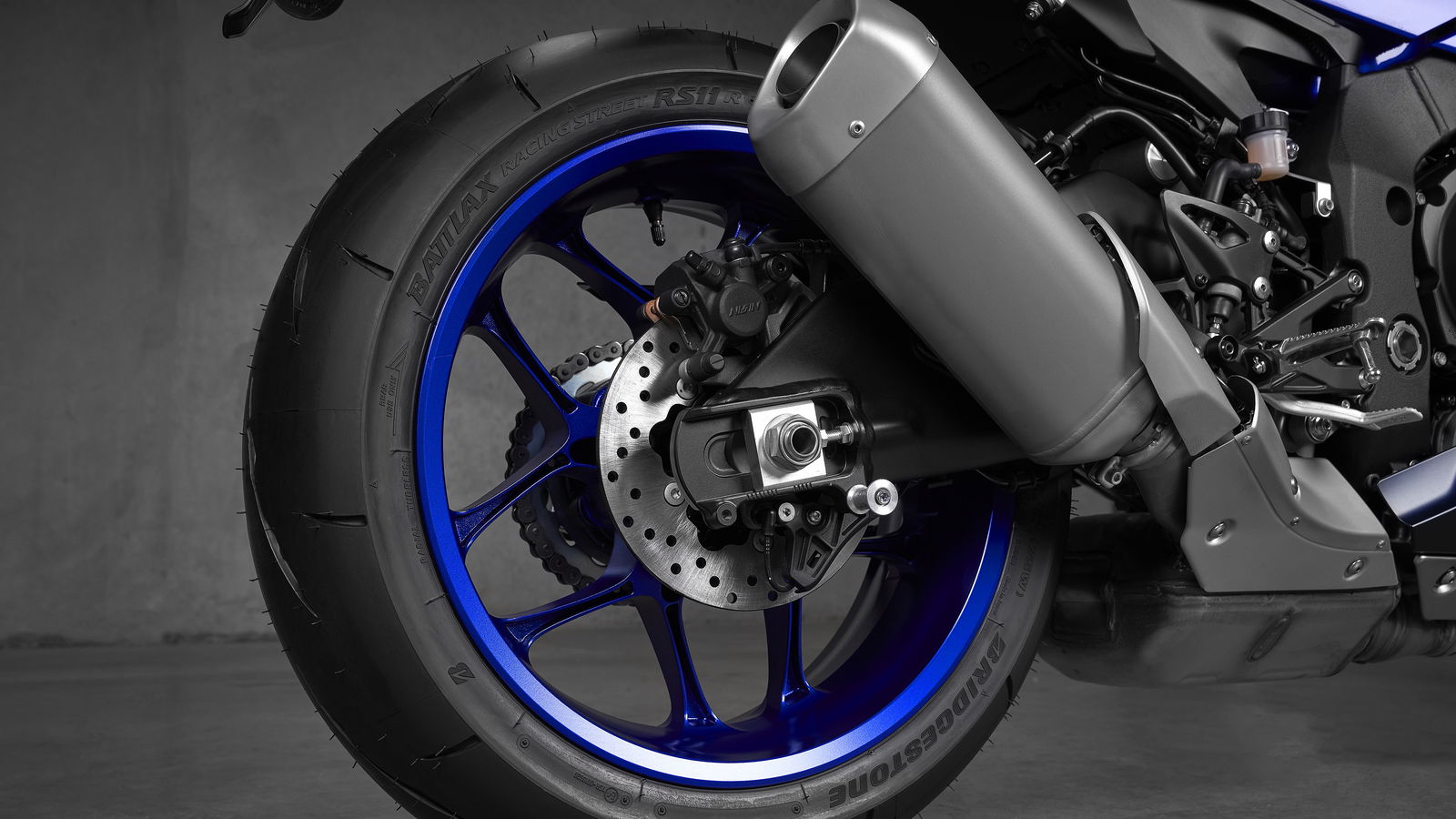The Strange World of Bike Measurements Explained
Why horsepower, miles per gallon and even tyre sizes are so, er, varied…

When talking about motorbikes we routinely bandy about units of measurement – brake horsepower, tyre sizes, tank capacity, fuel economy and so on, using units such as bhp, 120/70 17, 15 litres, and miles per gallon – but have you ever stopped to think about what they actually mean, and how bizarre some of them actually are?
Take tyre sizes for example: that ‘120/80 17’ refers to both metric AND imperial units, millimetres AND inches – but why?
Or fuel consumption: we routinely, still, talk about fuel capacity in litres, but fuel consumption in miles per gallon while our European cousins measure it, not as you might expect, in kilometres per litre but in litres per 100 kilometres. And don’t get us started on the Americans, who do use ‘mpg’ but whose gallons are different than ours…
So, we thought it’d be a bit of fun – and hopefully useful and educational, too – to look at some of the weirdest and most wonderful, and to explain, at least a little bit, what we’re actually talking about.
Tyre confusion? Blame the Americans…
A typical motorcycle front tyre dimensions these days is 120/70 ZR 17 – but what does it all mean? In simple terms, ‘120’ is the tyre width, in millimetres, ‘70’ is its aspect ratio, or profile (or height) as a percentage of its width. So, in this case, its profile is 70 per cent of its width (therefore, the lower the percentage, the lower the profile of the tyre). ‘ZR’ is its speed rating, which we won’t go into here. And 17 is the wheel’s diameter, in, er inches.
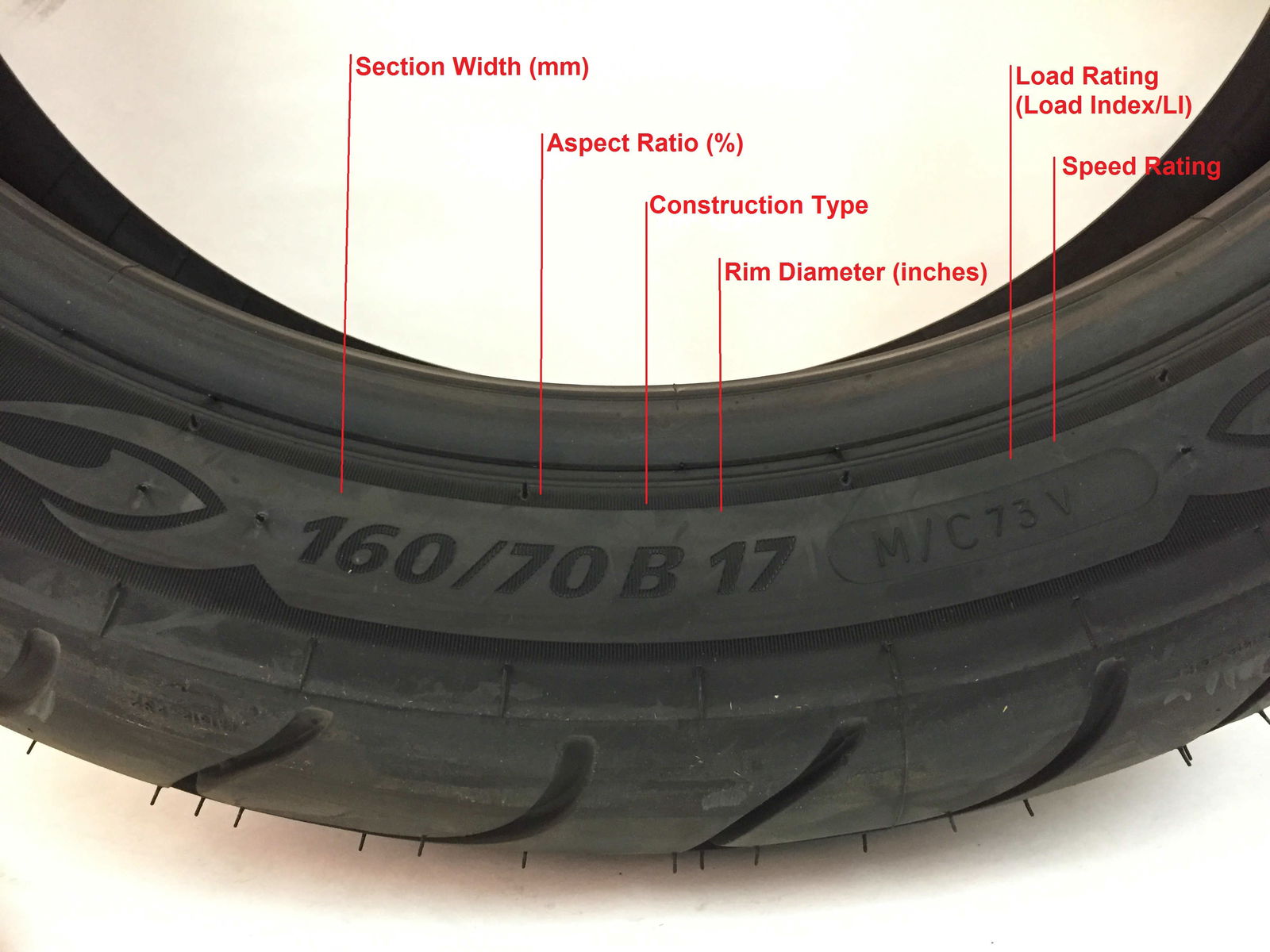
Why inches? Well, historically, pre-1970s, all tyres were measured purely in imperial units, with a typical front tyre from back then being something like 3.00 x 18, both in inches (tyres being narrower and larger diameter back then). Classic bike tyres are still labelled in the same way.
Imperial measurements remained dominant primarily because of the overwhelming importance of the US market for cars and bikes, which also historically is based on Imperial measures (although we’ll come back to this).
However, from the 1960s onwards, radial tyres, as developed and patented by French manufacturer Michelin, became increasingly important. Michelin, being French, used the metric system and, although impossible to change the by-then standard inch unit for diameters (which was actually written into US law) they were able to begin referring to tyre widths in mm.
When radial motorcycle tyres began to dominate the bike market in the 1980s, the same thing happened.
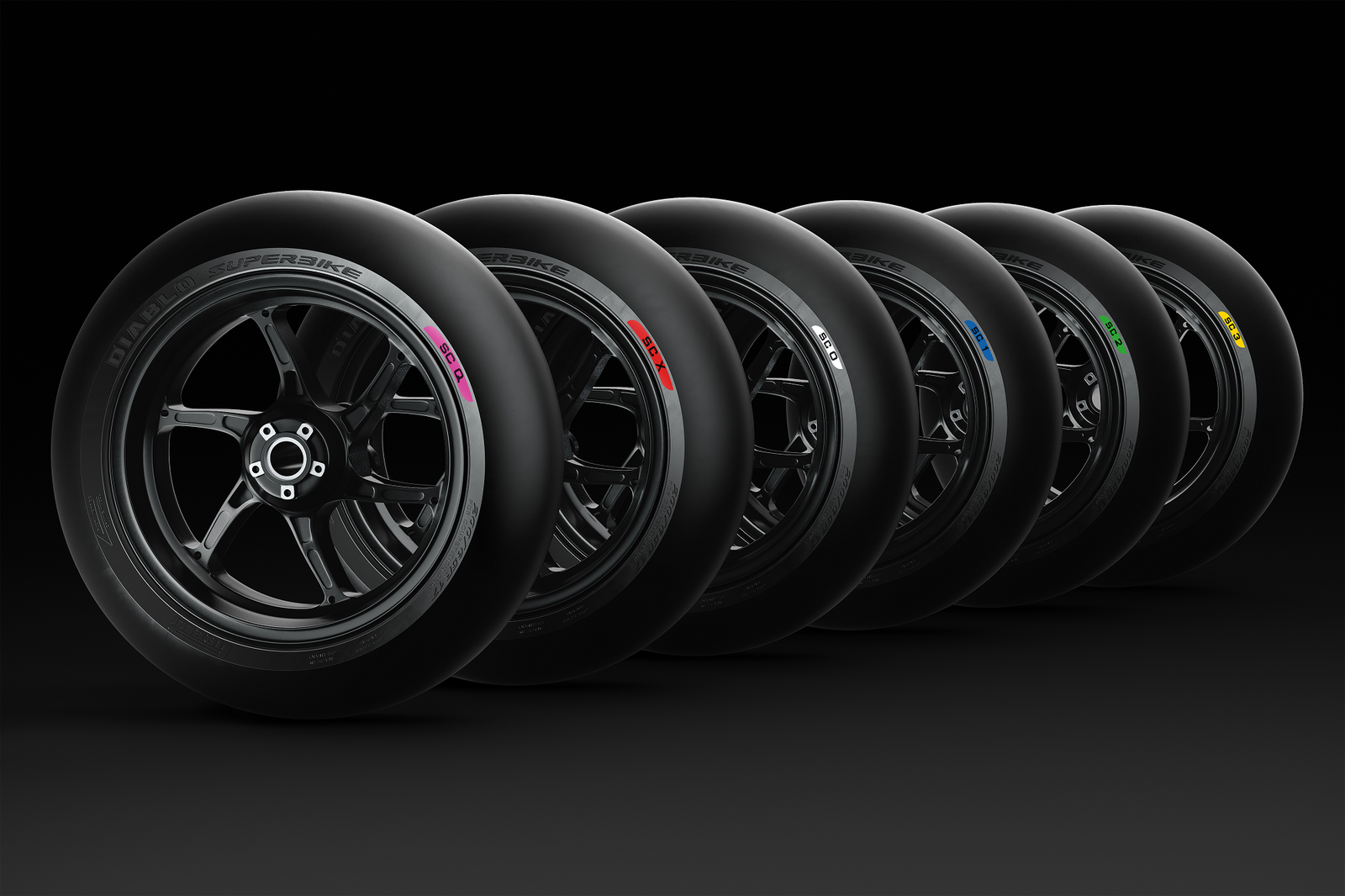
Interestingly, Michelin also attempted to introduce car tyres with metric diameters in the late 1970s. Its pioneering TRX was a low-profile design intended to work with a bespoke wheel and had some initial success in being adopted by BMW, Citroen and Austin (for its Mini Metro) among others. This was later abandoned, although (expensive) replacement tyres are still produced.
Where do these Imperial and Metric systems come from anyway?
Imperial refers to the primarily British system of measures which was first standardised and defined in the British Weights and Measures Act 1824. The system then came into official use across the British Empire from 1825. Due to Britain’s economic and political significance at the time and for the next 100 or so years, this system of miles, feet, inches and so on remained many countries’ standard units of measurement for many years.
Before then, miles, feet etc had been used for 100s of years, but not standardised. According to the University of Nottingham: the mile was based on a Roman measurement of 1000 paces; the word 'furlong' (or eighth of a mile) comes from 'a furrow long', or the distance that could be ploughed by an ox without a rest; a foot was traditionally the length of a man's foot and 'inch' comes from the Latin word 'uncia', meaning 'one-twelfth'.

The traditionally European ‘metric’ or decimal system, based on units of 10, meanwhile, was effectively born out of the French Revolution. The new government took the opportunity to reform its own previous system of weights and measures, the metric system was developed, Britain was invited to cooperate (we declined, hardly surprising considering our relations at the time) and the new system was launched in 1799. Based on the size of the Earth, a metre was defined as one ten-millionth of the length of an Earth quadrant, i.e., from the Equator to the North Pole. A kilogram was defined as the mass of one cubic decimetre of water at 4 degrees centigrade.
The British Government finally committed to convert to metric in 1965 although the official conversion took many years.
Is that it? Er, no… let’s blame the Americans again…
For the most part, Imperial and Metric are the twin bases of modern measurement, with metric taking over from Imperial inch by inch (geddit?).
But there is an exception – the US. On the other side of The Pond, they not only primarily still use the Imperial system, especially on the street (in science metric is the standard), which is why they still talk about miles and pints of milk and even go as far as measure engine capacities in cubic inches, not cc (thanks Harley-Davidson). And it’s all complicated further by one key US measure being different – gallons.
Up to the 1824 Act, Britain and most of its empire had defined a gallon under a 1707 statute as what is now known as the ‘wine gallon’. This was equivalent to a wine cannister seven inches in diameter and six inches high thus holding 231 cubic inches. However, from 1824 this changed to 10 pounds of water or 277.42 cubic inches. By then, however, the US had gained its independence so retained the original measure which, for reference, is 83.3 per cent smaller than the Imperial one and causes havoc with working out US mpg figures.
And ‘power’ is all about horses? Seriously?
Yes, sort of – and it all dates back to the invention of the steam engine. Although the first steam engine was invented by Thomas Newcomen in 1712 it wasn’t until James Watt significantly improved on this design in 1776 and adapted it to produce rotary motion that it became key to both the Industrial Revolution and the development of the train (and later other powered vehicles including motorcycles). In order to help market his engine, Watt came up with the term ‘horsepower’ to explain its value to people previously used only to working with horses. Under his definition, one mechanical horsepower was capable of lifting 550 lbs over one foot in one second, although this varied.
Today’s standard International System (or ‘SI’) unit of power, which is used to quantify the rate of energy transfer, is the Watt, named in his honour.
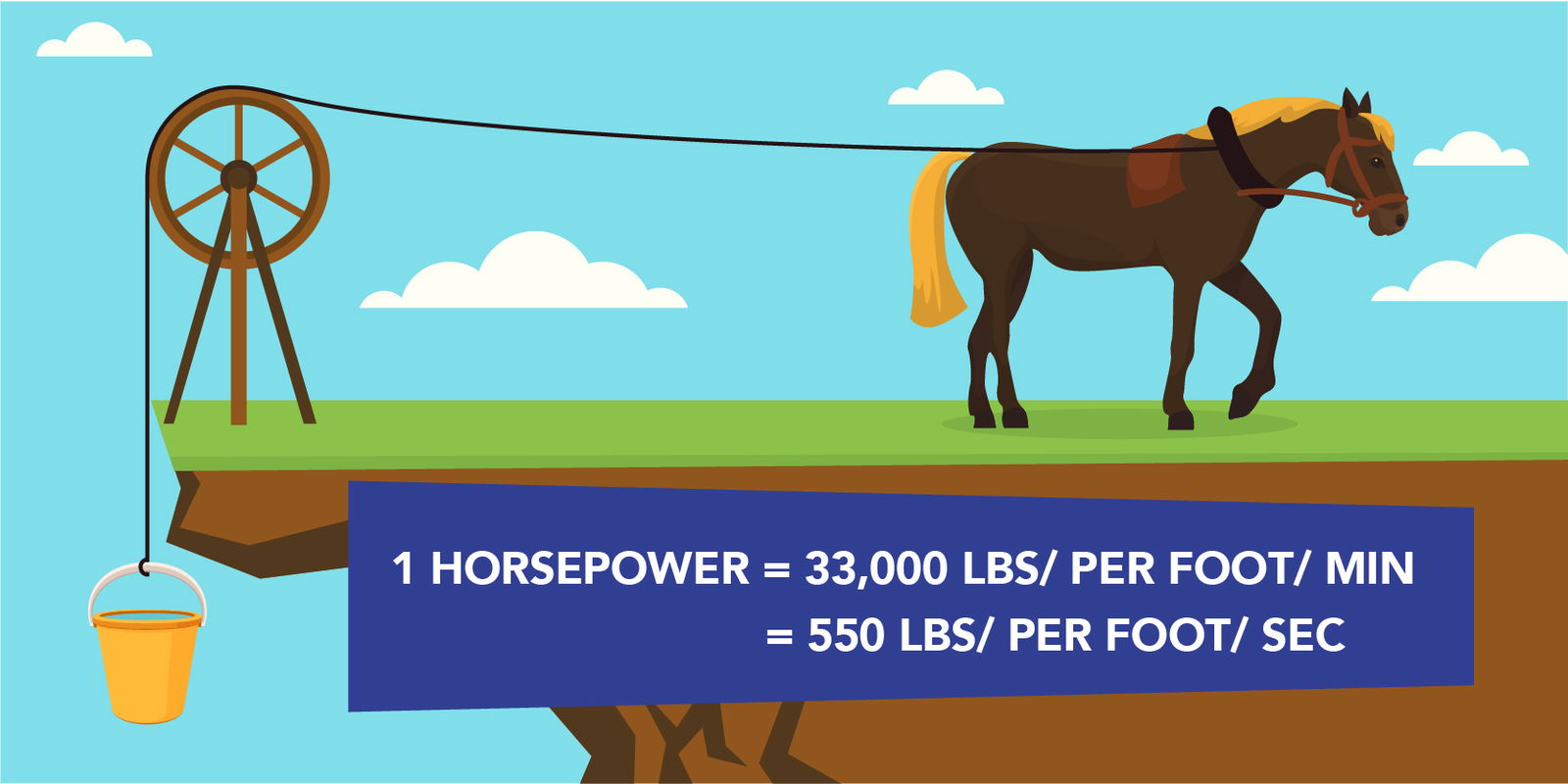
The metric equivalent of horsepower, sometimes known as PS or CV, is defined ‘as the power to raise a mass of 75 kilograms against the Earth's gravitational force over a distance of one metre in one second’.
In 1972 the PS was replaced by the kilowatt as the official power-measuring unit in EEC directives, while since 1 January 2010, the use of horsepower in the EU is permitted only as a supplementary unit, which is why kW is now so prevalent.
Still confused? Sorry - we tried our best!
